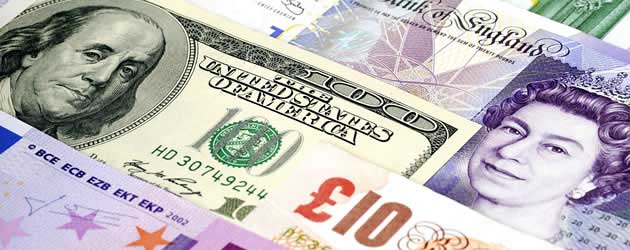
Today is likely to be a tale of two Central Banks. The Bank of England will release their asset purchasing target for March, and both the BoE and the European Central Bank will announce their benchmark interest rates.
Although the majority of economists expect the Bank of England to maintain their current record low interest rate of 0.50%, and hold the asset purchasing target at £375 billion, there is a very realistic chance that the UK Central Bank will look to further monetary easing in order to boost the struggling British economy. Similarly, analysts predict that the ECB will refrain from introducing an interest rate cut, but due to undershooting inflation in the currency bloc it is still possible that European leaders may decide to take rates to fresh record lows below 0.75%.
The Pound to Euro exchange rate slid by around half a cent yesterday to 1.1550 (GBP/EUR) as markets reacted enthusiastically to the prospect of another technocratic, if not popular, government in Italy.
The Sterling to US Dollar exchange rate sunk by around -1.5 cents, to a fresh two-and-a-half year low of 1.4966, as ADP Employment figures impressed in America and an article published in the Financial Times suggested that incoming BoE Governor Mark Carney could be given new powers to implement radical monetary loosening when he takes control of the ship in July.
The last BoE meeting saw Monetary Policy Committee members vote against further quantitative easing measures; but with three policy-makers including Governor Mervyn King, siding with the doves it was a closer decision than many analysts had anticipated.
Since then tensions have risen in Britain with Moody’s downgrading the UK’s AAA credit rating and weak Manufacturing and Construction PMI data fuelling fears that Britain could be on the verge of an unprecedented triple-dip recession.
In the past the UK’s high rate of inflation was seen as a strong enough deterrent from additional monetary easing, but with the Bank of England now accepting the fact that CPI is going to remain above target for some time, that particular obstacle appears to have been removed. UK economic growth is flatlining – at best – and policymakers could view another dose of quantitative as the perfect catalysis to help kick-start Britain’s economic revival.
If the UK Central Bank does decide to embark on a new round of asset purchases then Sterling is likely to come under some selling pressure. QE reduces the yields on British gilts, which in turn has the adverse effect of damaging demand for the Pound. A dovish BoE decision could send GBP/USD lower towards technical support at 1.4784, and a hawkish statement could lead to a rally towards key resistance at 1.5124.
However, the Pound could find some reprieve if the European Central Bank opts for looser monetary policy. The Eurozone is currently suffering from a shocking endemic of record high unemployment, and political issues in Italy are also threatening to derail the Mario Draghi-inspired recovery that has taken place since the ECB Chief vowed to protect the single currency “at all costs” last summer.
Lagging inflation in the currency bloc has become an issue in recent times and the ECB may decide to act now to prevent further economic downturn in the region. Under this scenario Sterling would be expected to rally against the Euro as yields fall, and also appreciate against the US Dollar as risk appetite increases and safe haven demand wanes.
GBP/EUR could rise towards 1.1640 if ECB action is forthcoming, but the pair is susceptible to declines if Mario Draghi strikes a less dovish tone in his accompanying Central Bank statement.

Comments are closed.